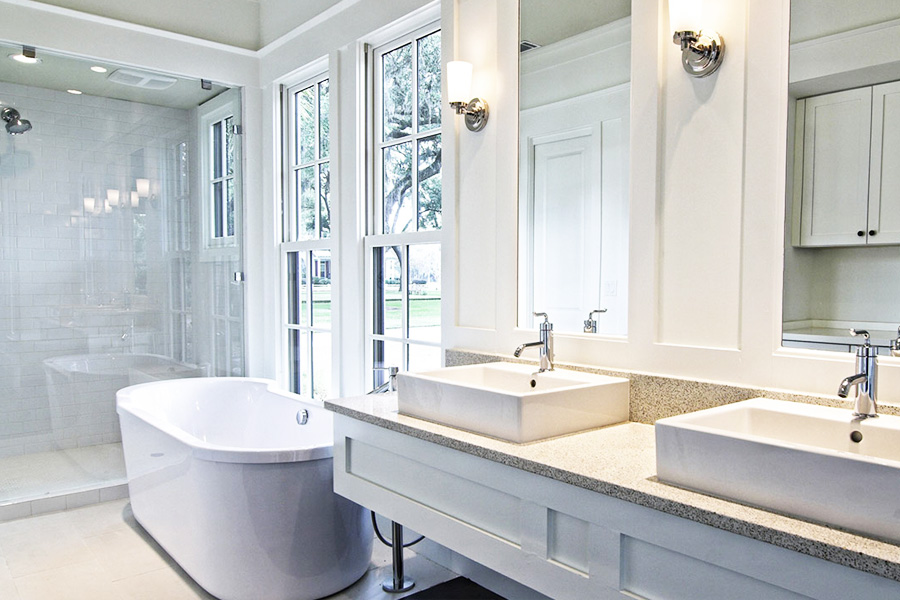
Bathroom Sensor: Water Saving Innovations Transforming Homes
Water conservation is an important aspect of our daily lives, especially in the bathroom, where a significant amount of water is often wasted. Bathroom sensor water saving technologies offer innovative solutions that not only help in reducing water wastage but also enhance the sustainability of our homes. Embracing these technologies can transform our bathrooms into eco-friendly spaces that contribute positively to the environment. In this article, we will explore the various aspects and benefits of using bathroom sensor water saving technologies.

Understanding the Basics of Bathroom Sensor Water Saving
The primary focus of bathroom sensor water saving technologies is to minimize unnecessary water usage through automated controls. These sensors can detect the presence and absence of users, ensuring that water flow is regulated accordingly. This not only helps in conserving water but also reduces utility bills and promotes eco-friendly living.
How Do Bathroom Sensor Technologies Work?
Bathroom sensor technologies are designed to automatically control the water flow in various bathroom fixtures such as faucets, showers, and toilets. Using infrared or ultrasonic sensors, these systems detect motion and presence, automatically turning on the water when needed and shutting it off when not in use.
Benefits of Water Saving Sensors in Bathrooms
Adopting water saving sensors in bathrooms offers a plethora of benefits:
- Environmental Impact: Significant reduction in water wastage, contributing to global water conservation efforts.
- Cost Efficiency: Lower water bills due to reduced water consumption.
- Convenience: Hands-free operation enhances hygiene and user experience.
Types of Bathroom Sensor Technologies
There are various types of bathroom sensor technologies available in the market, each designed for specific applications and benefits. Here are some popular options:
1. Sensor Faucets
Sensor faucets use motion detectors to control water flow. They are particularly effective in minimizing water use in sinks, as they ensure that water only flows when hands are detected beneath the spout. This technology is ideal for families with children who may forget to turn off the tap.
2. Sensor Toilets
Sensor toilets use sensors to flush automatically. This ensures that the toilet is flushed only when necessary, preventing over-flushing and water wastage. This technology is especially useful in public restrooms where people may forget to flush.
3. Sensor Showers
Sensor showers are designed to start and stop water flow based on the presence of a person in the shower area. These systems help reduce water usage by ensuring that water is only flowing when someone is actively using the shower.
Implementing Bathroom Sensor Water Saving Technologies
Integrating bathroom sensor water saving technologies into your home requires careful planning and consideration. Heres how you can get started:
Assess Your Needs
Before implementing any sensor technologies, assess your households specific needs. Consider the number of people using the bathroom, their habits, and water usage patterns. This assessment will help you choose the most suitable technologies for your home.
Choose the Right Technology
Select the sensor technologies that best fit your needs and budget. Whether its sensor faucets, toilets, or showers, ensure that you choose systems that are reliable and easy to maintain.
Professional Installation
While some sensor technologies can be installed by homeowners, it is advisable to seek professional help for a seamless installation process. Professionals can ensure that the systems are installed correctly and function optimally.
Maintenance of Bathroom Sensor Technologies
Regular maintenance is crucial to ensure the longevity and efficiency of bathroom sensor technologies. Here are some tips:
- Regular Cleaning: Keep the sensors clean and free of debris to ensure they function properly.
- Check for Leaks: Regularly inspect the systems for leaks and address any issues promptly.
- Software Updates: If applicable, ensure that the software controlling the sensors is up-to-date to maintain optimal performance.
Challenges and Considerations
While bathroom sensor water saving technologies offer numerous benefits, there are challenges to consider:
Initial Costs
The initial investment for purchasing and installing sensor technologies can be high. However, the long-term savings on water bills can offset these costs over time.
Compatibility
Ensure that the chosen sensor technologies are compatible with your existing bathroom fixtures and plumbing systems.
Future of Bathroom Sensor Water Saving Technologies
The future of bathroom sensor water saving technologies looks promising with advancements in smart home technology. The integration of IoT (Internet of Things) in sensor systems will enable more precise control and monitoring of water usage, leading to even greater efficiency and water conservation.
Conclusion
Incorporating bathroom sensor water saving technologies in your home is a significant step towards sustainable living. These innovations not only help conserve water but also provide convenience and cost savings. As technology continues to evolve, these systems will become more accessible and efficient, making them an invaluable addition to any eco-friendly home.
Additional Resources
For more information on eco-friendly bathroom solutions, visit Oatey Blog. You can also explore internal resources such as Eco Home Improvement, Toilet Water Solutions, and Green Bathroom Ideas.

FAQ
What are the benefits of using bathroom sensor technologies?
Bathroom sensor technologies help in reducing water wastage, lowering water bills, and enhancing the convenience and hygiene of bathroom use.
Can I install bathroom sensor systems myself?
While some systems can be installed by homeowners, it is recommended to seek professional installation to ensure proper setup and optimal performance.
Are bathroom sensor technologies worth the investment?
Yes, the initial cost of installing bathroom sensor technologies is often offset by long-term savings on water bills and environmental benefits.
This article contains affiliate links. We may earn a commission at no extra cost to you.